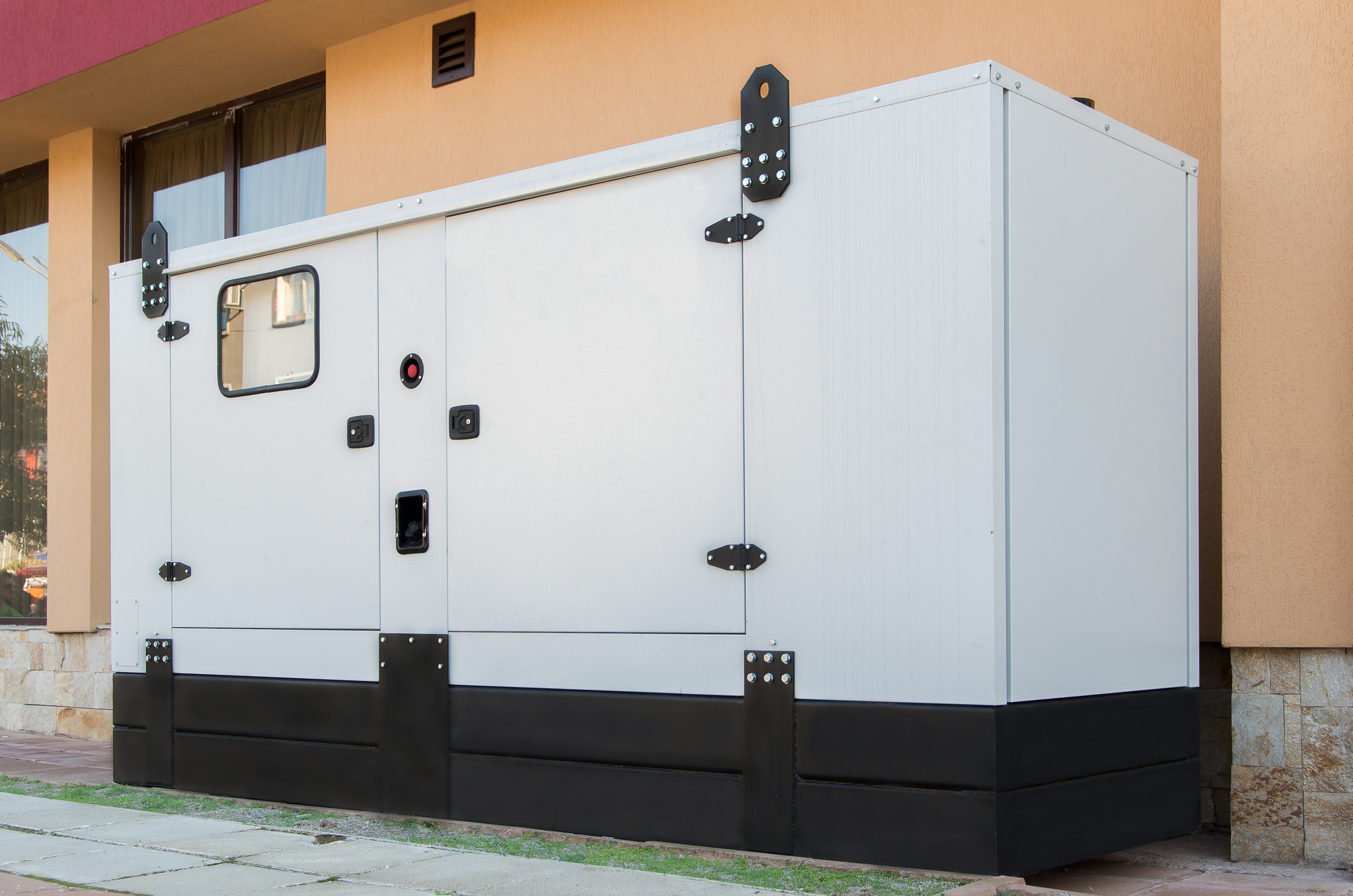At McBride Electric, we understand the importance of having a reliable standby generator to ensure business continuity during power outages. While generators offer convenience and ease of use, it is crucial to follow standard procedures and take necessary precautions during installation, operation, and maintenance to prevent potential hazards to life and property.

In this comprehensive guide, we will walk you through the essential steps for selecting, installing, and maintaining your generator, as well as provide critical safety information to keep you and your equipment protected.
Understanding the Risks of Generator Use
Before diving into the specific safety rules, it’s essential to understand the potential risks associated with generator use. Generators produce carbon monoxide, a colorless, odorless, and tasteless gas that can be deadly if inhaled in high concentrations.
Additionally, improper generator use can lead to electrical hazards, such as electrocution and fire.
Proper Generator Placement
Outdoor Use Only
One of the most critical generator safety rules is to ALWAYS operate your generator outdoors. Never run a generator inside your home, garage, basement, or any other enclosed space, even if doors and windows are open. Generators produce carbon monoxide, which can build up quickly in enclosed areas, leading to serious health risks or even death.
Distance from Your Home or Workspace
When placing your generator outdoors, ensure it is at least 20 feet away from your home, doors, windows, and vents. This distance allows the carbon monoxide to dissipate, reducing the risk of it entering your living or working space.
Avoiding Enclosed Spaces
In addition to keeping your generator away from your home or workspace, avoid placing it in any enclosed space, such as a shed or covered porch. These areas can still allow carbon monoxide to accumulate, posing a significant health risk.
Selecting the Right Generator
Choosing the appropriate generator for your needs is the first step in ensuring a successful installation and operation. When selecting a portable generator, consider the following factors:
- Constant Wattage: Determine the total wattage of the appliances you need to power during an outage. This sum is known as the “constant wattage.”
- Surge Rating: Motor-driven appliances, such as refrigerators and air conditioners, require up to three times their constant wattage during startup. Ensure that your chosen generator has a surge rating that exceeds your startup wattage requirements.
- Voltage Ratings: Match the voltage ratings of your equipment and appliances to the generator’s output.
Safety Precautions
To minimize risks associated with generator operation, adhere to the following safety measures:
- Follow Manufacturer’s Instructions: Always follow the manufacturer’s recommendations for installation, repair, and maintenance.
- Exhaust Fumes: Direct exhaust fumes away from inhabited areas and ensure proper ventilation to prevent carbon monoxide poisoning.
- Clean Surroundings: Keep the area around the generator clean and free of clutter and combustible materials.
- Regular Inspections: Inspect the equipment regularly and replace defective or damaged parts promptly.
- Attentiveness: Remain alert while working with the generator.
- Disconnect Before Maintenance: Disconnect battery cables before working on the generator to prevent accidental start-up.
Electrical Hazards
- Turn off power voltage supplies at the source during installation or servicing.
- Ensure proper insulation and covering of electrical connections.
- Maintain grounding/earthing wiring.
- Use recommended capacity wiring, cables, and cord sets.
Fire and Explosion Hazards
- Prohibit smoking near the equipment.
- Clean up fuel or oil spills and repair leaks immediately.
- Keep a fire extinguisher readily available.
Regular Maintenance Schedule
To ensure the reliability and consistent performance of your generator, follow a strict maintenance schedule:
- Cooling System: Check radiator air restriction, hoses, connections, fluid concentration, belts, and louver operation.
- Air Intake System: Inspect for leaks and loose connections.
- Air Cleaner, Turbocharger, Muffler, Traps: Clean and replace as needed.
- Fuel System: Monitor fuel levels, sediments, and pump functionality.
- Exhaust System: Check for leaks, chokes, and flush condensation cap.
- Electrical System: Review meters and recharge batteries if required.
- Oil and Filters: Change annually.
- Diodes, Bearings, Brushes, Wiring, Switches, and Breakers: Inspect and replace as necessary.
- Controls: Check voltage regulator, wiring, relays, monitors, and bulbs.
- Transfer Switch: Adjust or reset time delays and exerciser clocks.
- Performance Parameters: Monitor AC output and frequency.
Emergency Preparedness
Having a Backup Plan
While generators can be lifesavers during power outages, it’s essential to have a backup plan in case your generator fails or runs out of fuel. Keep a supply of batteries, flashlights, and non-perishable food on hand, and consider investing in alternative power sources like solar panels or battery backup systems.
Knowing When to Seek Help
If you’re unsure about any aspect of generator safety or operation, don’t hesitate to seek help from a qualified professional. Electricians and generator manufacturers can provide valuable guidance and assistance to ensure you’re using your generator safely and effectively.
Frequently Asked Questions (FAQs)
Can I run my generator in my garage with the door open?
No, you should never run a generator in any enclosed space, even with doors or windows open. Always operate your generator outdoors, at least 20 feet away from your home or workspace.
Is it safe to refuel my generator while it’s running?
No, never refuel your generator while it’s running. Always turn off the generator and let it cool down for at least 15 minutes before refueling to prevent fires or explosions.
Can I plug my generator directly into a wall outlet to power my home?
No, plugging your generator directly into a wall outlet, known as backfeeding, is extremely dangerous and illegal. It can send electricity back into the power lines, endangering utility workers and potentially causing fires. Always use a transfer switch installed by a qualified electrician.
How often should I perform maintenance on my generator?
Follow the manufacturer’s recommended maintenance schedule, which may include tasks like changing the oil, replacing air filters, and checking for worn or damaged parts. Regular maintenance ensures your generator remains safe and reliable.
What should I do if I suspect carbon monoxide poisoning?
If you or someone else experiences symptoms of carbon monoxide poisoning, such as dizziness, nausea, headaches, confusion, fatigue, or shortness of breath, move to fresh air immediately and seek medical attention. Install carbon monoxide detectors in your home and workspace to alert you of dangerous levels of carbon monoxide.
Conclusion
By following the guidelines outlined in this comprehensive guide, you can ensure the safe, efficient, and reliable operation of your standby generator. Remember to always prioritize safety, adhere to manufacturer’s instructions, and perform regular maintenance to maximize the lifespan and performance of your equipment.
At McBride Electric, we are committed to providing you with the knowledge and resources necessary to maintain business continuity and peace of mind during power outages.
Call us today at 817-858-0255 (Ft. Worth) or 972-733-1199 (Dallas) to schedule your home generator installation service.
